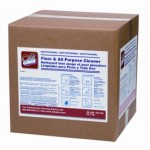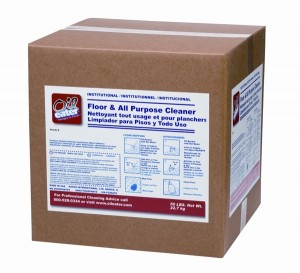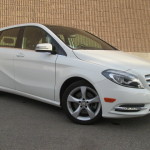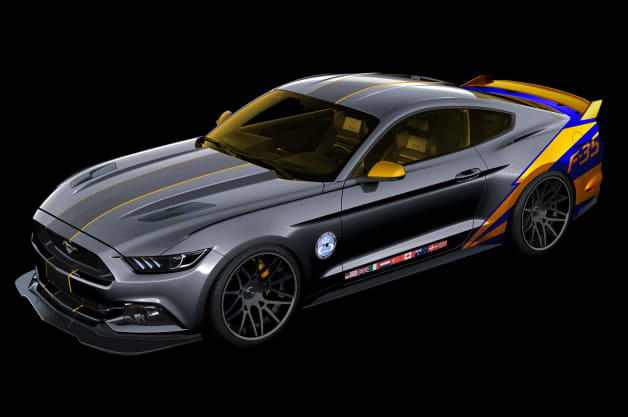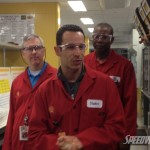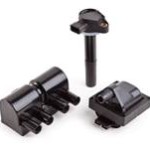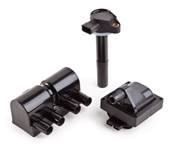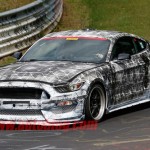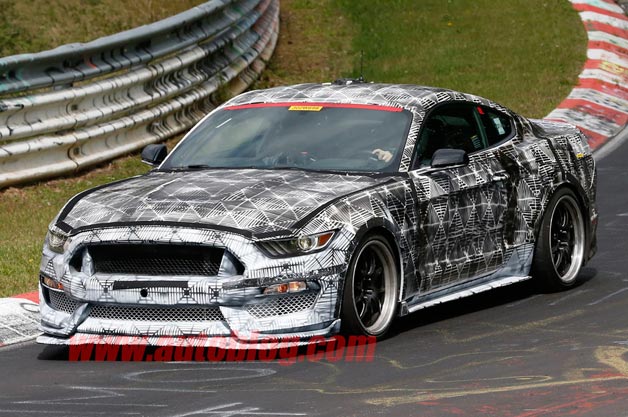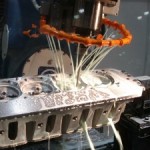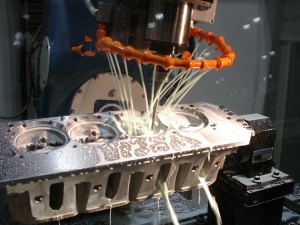High speed CNC porting tooling requires plenty of coolant to flush away chips and to carry away heat.
When it comes to machining late model engines, tolerances are generally much tighter and finishes often have to be much smoother to meet original equipment specifications.
If you’re doing performance work, there’s even less margin for error. Consequently, you need up-to-date equipment and tooling that can hold close tolerances and deliver high quality finishes while boosting productivity at the same time.
Most of today’s boring, honing, resurfacing and valve and guide machines have the speed, rigidity and accuracy to achieve these kind of results, but they also require tooling that can match the performance capabilities these machines are designed to deliver.
Carbide has served the automotive engine building industry well for many years, and it is still an affordable option for shops that can’t afford the higher initial cost of superabrasives, like PCD (PolyCrystaline Diamond) or CBN (Cubic Boron Nitride).
Carbide was first introduced way back in the 1930s for cutting cast iron and steel. There are various types of carbide including tungsten carbide and titanium carbide.
Small particles of carbide are bonded together with cobalt in a sintering process to manufacture various types of tool inserts, drill bits, end mills, ball mills, cutting tools and reamers.
The toughness and durability of a carbide tool will depend on the type of carbide, how much cobalt, nickel, molybdenum or other metals are in the alloy, whether the tool is solid carbide or a cemented carbide over a steel substrate, and whether the tool has an outer coating.
For some applications such as a fluted reamer for bronze or manganese valve guides, plain carbide often works best. But, for reaming cast iron guides, a coated carbide may be better.
For milling and boring cast iron and aluminum heads and blocks, carbide works well on both.
But, carbide has more of a challenge cutting harder metals such as ductile iron and Compacted Graphite Iron (CGI).
The harder the metal, the faster the tool wears and the more often you have to replace your tooling.
It’s the same story with cutting speeds. The higher the cutting speed, the more heat that’s generated and the shorter the tool life.
Coated carbides hold up better than uncoated carbides, and some coatings have been specially developed for machining ductile iron and CGI.
Even so, CBN would probably be the best choice for machining the harder grades of iron because of its increased toughness and tool life. Even though the initial cost of CBN is higher than carbide, CBN can actually save you money in the long run because the tooling lasts longer.
If you’re boring cylinders in cast iron engine blocks, carbide works fine, as long as you keep the speed and depth of cut within limits.
PolyCrystaline Diamond (PCD) tooling works best on aluminum, while Cubic Boron Nitride (CBN) tooling is best for surfacing iron.
The best results are typically achieved with a boring speed of 400 RPM with standard carbide tooling. At that rate, you can probably bore 40 to 50 cylinders before you have to replace or rotate the tooling.
On the other hand, if you are using a high speed boring machine, you’ll have to use CBN because carbide just won’t hold up at higher cutting speeds.
With CBN and high speed boring equipment, you can bore a cylinder in 30 to 40 seconds at 1,200 to 2,500 RPM. The only drawback to faster boring speeds is that may leave a rougher surface with fractured metal that will require additional honing to get it down to base metal for a proper surface finish.
The best choice for machining aluminum blocks and heads is PCD. Aluminum chips tend to stick to CBN, but not PCD, so if you don’t want to use some type of lubricant/coolant when machining aluminum, use PCD inserts to achieve the high quality finish you want.
Like CBN, PCD is extremely hard and provides long tool life, but it can react chemically when used on iron, and lose its cutting edge.
If you want to use CBN to resurface aluminum, a light coating of soap, wax or WD-40 can prevent the aluminum chips from sticking to the CBN tooling and smearing the surface.
To achieve a high quality finish with any type of tooling, use a higher cutting speed and lower feed rate with a very shallow cut on the final pass (less than .001 inch). With a single insert cutter spinning at 1,000 to 1,500 RPM, keep the feed rate under two inches per minute. This should produce a surface finish in the low teens (RA or Roughness Average).
Just as important as using the right tooling, speeds and feeds is the rigidity of the equipment itself. To achieve today’s flatness and smoothness requirements, a surfacer must be a very rigid machine. The work table, cutting head, shaft and motor must all be strong and constructed to extremely tight tolerances.
Any flexing or movement in these parts will affect the quality of the surface finish regardless of the type of inserts you are using.
So, if you’re not getting the kind of surface finishes you want, don’t blame the inserts you are using. It might be the equipment itself.

Line honing a cylinder block is necessary for proper bore alignment and geometry.
High-Tech Tool Coatings
The science of coatings has come a long way in recent years. Coatings generally improve tool durability and wear resistance significantly compared to uncoated tools. Some coatings can extend tool life up to 10X or more.
Coatings can also reduce the amount of power needed to cut metal while reducing heat buildup in the tool and on the work surface.
Coatings such as Titanium-Carbo-Nitride (TiCN) and Zirconium-Nitride (ZiN) may be used to add wear resistance. Titanium-Nitride (TiN) is a gold colored coating that may also be used for wear resistance. Aluminum Oxide (alumina or Al2O3) or Zirconium-Oxide (ZrO2) may also be used to provide thermal and corrosion protection. Some inserts have multiple coatings to provide multiple benefits.
Coatings may be applied by a Chemical Vapor Deposition (CVD) process or by a Physical Vapor Deposition (PVD) process. Coatings applied by a CVD process are usually thicker, provide increased wear resistance and usually more suitable for higher cutting speeds. CVD is often used to apply TiCN and Al2O3 coatings on tools. Coatings applied with a PVD process may be extremely thin (only 0.25 to 5 microns thick), but leave a sharper cutting edge best suited for slower cutting speeds. PVD coatings are often used on solid carbide tools as well as positive rake inserts. PVD coatings also work well on inserts used for intermittent cuts (like resurfacing cylinder heads).
Coatings obviously add expense to manufacturing of tooling, but when you consider the advantages that coatings often provide (longer tool life and better surface finishes), they are well worth the cost.
The best advice is to follow the tool supplier’s recommendations for which type of coatings will work best for a given application.
Cutting Valve Seats
The majority of cylinder heads today are aluminum, which means the heads may have to be machined to accept new valve seats and/or valve guides if the original parts are loose or damaged.
Valve seats are typically refinished with multi-angle valve seat cutters which include 3-angle, 4-angle, multi-angle and even continuous curve bits. Guides can be reamed to oversize to accept valves with oversized stems, or enlarged to accept valve guide liners or new guides.
Tungsten carbide valve seat cutters with various angle profiles and diameters have made valve seat finishing into a one-step operation, even for multi-angle valve jobs. Individual seat angles can still be cut the “old fashioned way” using several single angle cutters, but why make extra work for yourself if it can be done in a single step with a multi-angle cutter?
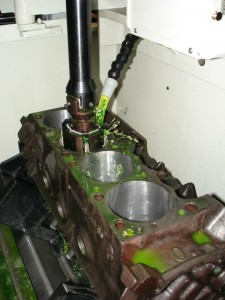
Carbide or diamond honing stones can both deliver a high-quality finish. Diamond stones cost more initially, but can hone far more cylinder bores and with greater consistency than the carbide units.
Honing Abrasives
Honing abrasives may be used for line honing main bores and cam bores as well as cylinder bores.
Honing may be multi step as when rough honing followed by finish honing, or it may be used following a boring operation to smooth the bores to final dimensions and surface finish specifications.
One of the concerns with cylinder honing is tool flex and the problems it can create in the bore geometry and finish. For some operations, a honing abrasive that cuts freely may be more important than the longevity of the honing stones.
Thinner stones combined with honing heads that are more closely matched to match a specific bore diameter rather than a broad range of bore sizes is a current trend in shops today.
According to one supplier of honing stones, most engine builders are using metal bonded diamond or CBN honing abrasives rather than conventional vitrified abrasives such as silicon carbide or aluminum oxide for their honing operations. Silicon carbide works well with ordinary cast iron, while aluminum oxide is better for harder alloys.
Conventional vitrified abrasives cut cleanly and do an excellent job of finishing cylinders – as long as you use the right honing procedure to achieve a bore finish that meets OEM specs or the ring manufacturer’s requirements. But, conventional honing stones also wear quickly, so you have to constantly monitor the honing process and compensate for stone wear to keep the bores round and straight.
By comparison, diamond and CBN honing abrasives wear very little so they cut more consistently. This usually allows more uniform finishes and better overall results.
A set of conventional vitrified honing stones might handle up to 30 V8 blocks (240 to 260 cylinder bores) before they’re worn out and have to be replaced.
A set of metal bond diamond honing stones, on the other hand, might do as many as 1,500 V8 engine blocks (12,000 cylinder bores) before they have to be replaced. That’s a huge difference!
So, although the initial cost of the diamond honing stones is much higher than conventional honing stones, their longer service life more than makes up the difference over the long run.
Because diamond is a harder material and wears more slowly than conventional abrasives, it cuts differently and requires more pressure.
Diamond tends to plow through a metal surface rather than cut through it. This can generate heat and distortion in the cylinder bore if the wrong type of equipment, pressure settings or lubrication are used in the honing process.
When done correctly, though, it can actually improve bore geometry by producing a rounder, straighter hole.
Diamond is also good for rough honing cylinders to oversize because it can remove a lot of metal fast. Finishing requires at least a two-step procedure, otherwise the surface will be too rough.
If you’re switching from conventional stones to diamond, you’ll generally have to use a higher number grit to achieve the same RA (roughness average) when finishing a cylinder.
For example, if you have been using #220 grit conventional stones to finish cylinders for chrome rings, the equivalent diamond stones might be a #325 grit.
If you have been using #280 grit conventional stones to hone for moly rings, the diamond equivalent might be #550 grit stones. The actual numbers will vary somewhat depending on the brand and grade of the stones.
Diamond honing stones tend to leave a lot of folded and torn metal on the surface, so the bores usually need to be brushed to remove the debris when they are finished.
Many different names are given to the same tool and process. Some call it a plateau hone, a soft hone, a whisker hone or an ultra-fine hone. But they all do the same thing: they sweep across the surface to remove jagged peaks, folded and torn material.
A cylinder bore must also have a certain amount of cross hatch and valley depth to retain oil. It must also provide a relatively flat surface area to support the piston rings.
Ring manufacturers typically specify a surface finish of 16 to 25 RA for moly faced rings. These numbers can be easily obtained with diamond stones and brushing.
When finishing the cylinders with a brush, only light pressure is required.
The RPM of the brush should be similar to that which the cylinder was originally honed, and no more than 16 to 18 strokes should be applied (some say 8 to 10 strokes is about right).
Too many strokes with a brush may produce too smooth a finish that doesn’t hold oil.
Reversing the direction of rotation while brushing helps to remove the unwanted material on the surface. The end result should be a cylinder that provides immediate ring seal with little if any wear on the cylinder wall or rings when the engine is first started.
Brushing the bore after honing makes a huge improvement in the surface finish, whether diamonds or conventional honing stones were used to hone the bore.
Brushing should lower the overall RA down to 8 to 12, with RPK (relative peak height) numbers in the 5 to 15 range, and RVK (relative valley depth) numbers in the 15 to 30 range.
The post Cutting Tools and Abrasives for Engine Work appeared first on Engine Builder Magazine.
Read more here: Engine Builder Magazine

